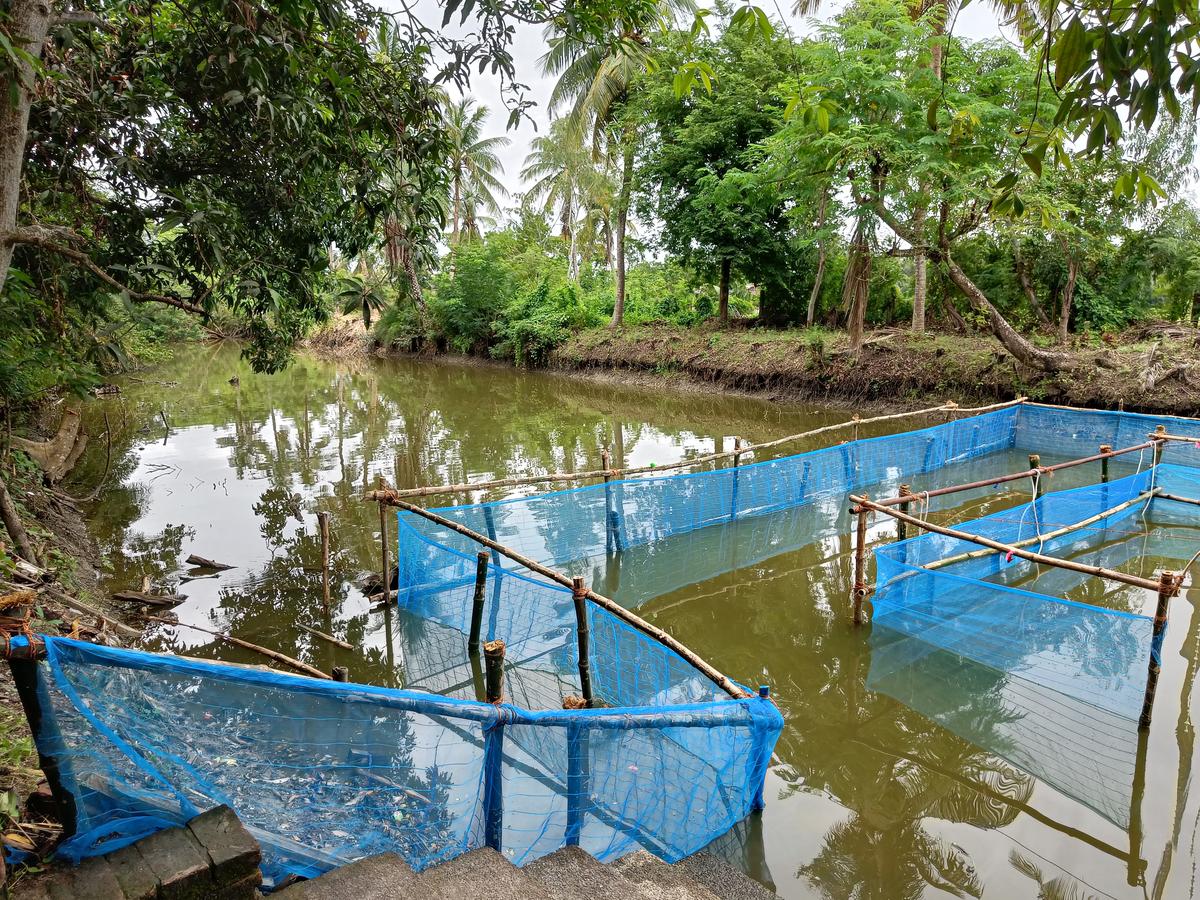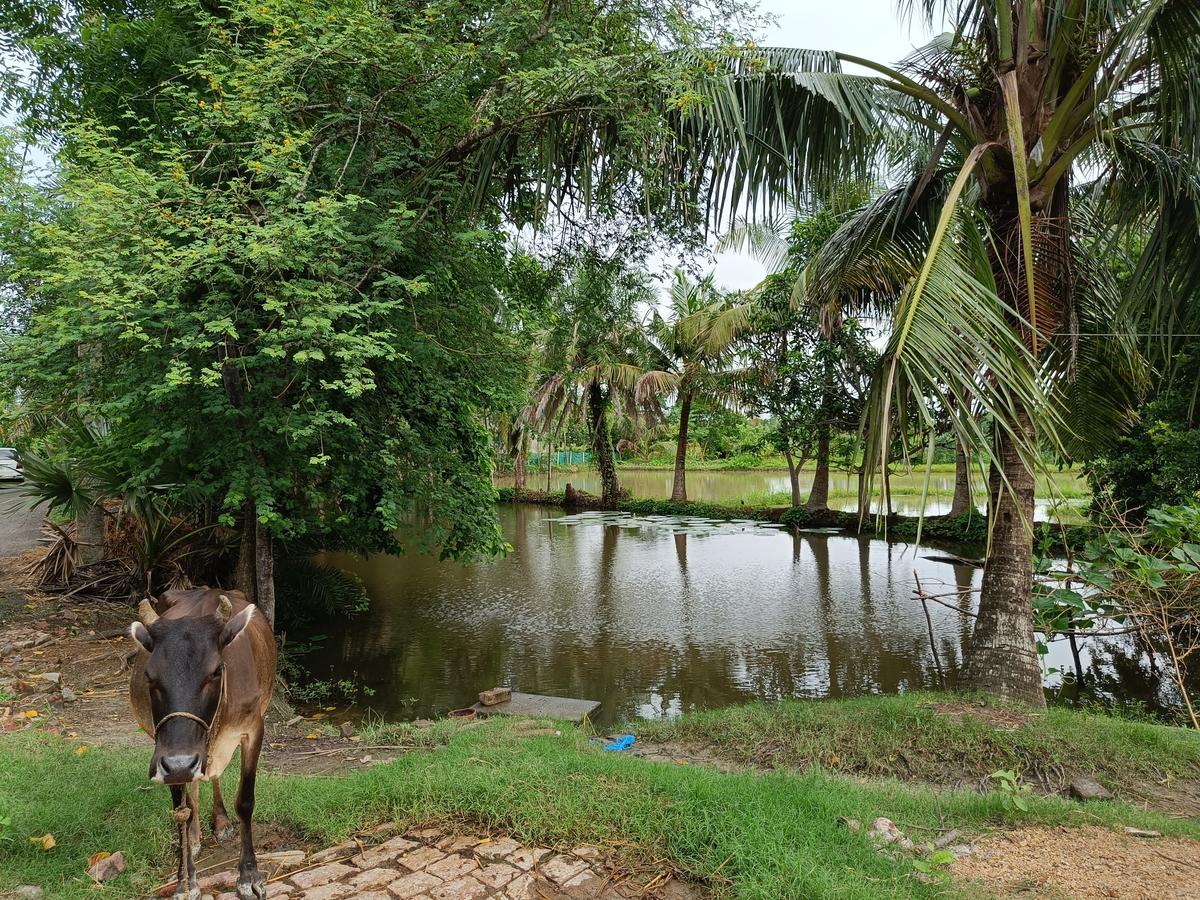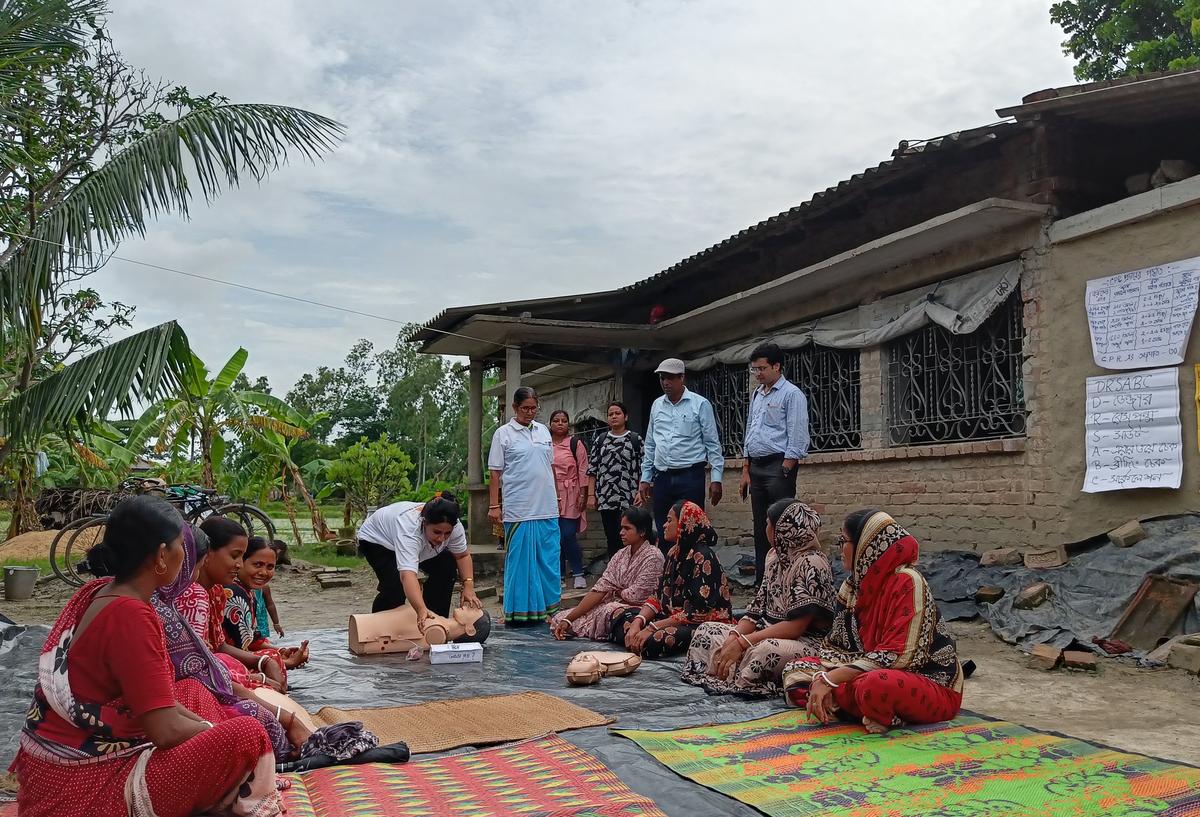[ad_1]
Like any parent, Mangala Pradhan still remembers the day her 11-month-old took his first steps. But one December morning, when she was in the kitchen, she didn’t notice her “chanchal” (restless) son leave her side. An hour later, when she had finished cooking and looked around, she panicked and stepped out to look for him. Just outside the kitchen, in the community pond, she saw her son’s body. Eighteen years later, she still remembers the day.
Tears trickling down her chin, she says her son was so active “it became hard to watch him all the time. It was winter and he was wearing a thick jacket.” She feels that may have absorbed water quickly and weighed him down.
Mangala’s grief is the same as thousands of other mothers across the Sundarbans in West Bengal, whose children have lost their lives to drowning over the years.
A 2019 household survey conducted by The George Institute for Global Health (TGIGH) and non-profit Child in Need Institute (CINI) shows that three children, aged between 1 and 9, drown every day in the Sundarbans. The survey is being repeated this year, but Sujoy Roy, CINI’s national advocacy officer, says so far the data have not shown an improvement.
Dedicated resources
To tackle this, Kavach (protector) centres were launched in September 2023, a community-run initiative where ‘mothers’ look after children between 4 months and 5 years. Every Kavach ‘mother’ has just two children to take care of, so no child remains unattended, unlike the local anganwadi centres that lack basic amenities with fewer staff members.
Kavach centres are a pilot project in Kultali block, serving two villages: Baikuntapur and Bhubaneswari, in South 24 Parganas district. The project is funded and given technical support by India’s Ministry of Health and Family Welfare, the World Health Organization, TGIGH, and CINI.
“Jar jai sudhu sei bojhe ki gaache. Ami chaina r kono maa-er tar sontan harak (Only one who loses a child knows how it feels. I don’t wish this on any mother),” Mangala says. She has two more children, and is a Kavach Maa in Baikuntapur.
A part of this project is a two-month-old initiative of pond-based swimming pools. Here, swimmers from the area train children above 5 so they can save themselves and call for help when needed. Launched on July 25 — World Drowning Prevention Day — it takes forward the theme ‘Anyone can drown, no one should’.

The swimming-pool ponds are enclosed to help young children learn swimming.
| Photo Credit:
Shrabana Chatterjee
In 2021, research published in Injury Prevention, a peer-reviewed journal, found that “The drowning mortality rate for children aged 1 to 4 years was 243.8 per 100,000 children and for 5 to 9 years was 38.8 per 100,000 children. 58.0% of deaths were among children aged 1 to 2 years.”
According to United Nations Educational, Scientific and Cultural Organization (UNESCO) data, 30% of the Sundarbans area is covered in water bodies — there are 102 mangrove-forested islands in the delta among which 54 are inhabited, all at danger when sea levels rise during the monsoon. Every cluster of 10-20 homes shares a pond for fish and water, and there are rivulets across all the islands. This makes children vulnerable to drowning, but there are other factors, including long-held beliefs on religion and health.
Dr. Tej Prakash Sinha, additional professor at the Emergency Medicine Department, Jai Prakash Narayan Apex Trauma Center, AIIMS Delhi, and co-director of the WHO Collaborating Centre for Emergency and Trauma Care, Delhi, says the Sundarbans has unique problems: “The father cannot stay home, the mother cannot get additional house help; she has to do all the household chores.” Burdened with livelihood struggles, children slip through this poverty crack.
An area of vulnerability
Many fathers in the Sundarbans leave West Bengal to work as labourers in other States. The men who still live in the area set out early in the day to work in their fields. The women do all the household chores and look after the children.
Most houses have natural ponds or small creeks in their kitchen yards; some homes have water on two sides. The silt-heavy black soil on the pond banks is slippery; and one misstep can land a child in the water.
The young children of the house stay with their mothers when they are working in the kitchen, but may wander into their backyards briefly. According to the 2019 study’s data, 53% of the children drowned between 10 a.m. and 2 p.m. This is when the women are busy and the fathers are away. Up to 90% of them drowned within 50 metres of their home.
The toddlers at Kavach centres sing a jingle in Bengali, as the Kavach Maas, clap along and encourage them. “We will not go near the water alone; we will scream in case of problems; we will call for help; we will go swimming, but never alone,” it goes.
The ‘mothers’ also do community plays at other villages to raise awareness about drowning. They were given cardiopulmonary resuscitation (CPR) and first response training for over two weeks as a part of the project.

Open water bodies like these surround the houses of residents in Kultali area, Sundarbans on all sides. This is a common phenomenon for every household in this riverine area.
| Photo Credit:
Shrabana Chatterjee
“Earlier, when a child drowned, we would hold them horizontally over our heads and turn them round and round, hoping the water they swallowed would come out. We never knew the water in the lungs is the major killer,” says Lalita Kayal, a community mother.
The three Primary Health Centres (PHCs) are about 25 kilometres away. The roads are narrow with no public transport. By the time the family manages to take a survivor to the hospital, they may die. The State-run mobile boat dispensary services are not active in the Kultali region.
“It takes only 10 seconds for someone to drown,” says CINI’s Roy. He adds that the spinning and taking the child to local quacks wastes valuable time, hence the reiteration on awareness and prevention.
People in the Sundarbans worship Sasthi Buri, who is believed to be the guardian of newborn children. The long-held belief is that if barriers are put up around ponds to prevent children from slipping in, it would anger the deity and make drowning incidents even more frequent. The NGOs working on the Kavach project came together and conducted awareness programmes and door-to-door campaigns to dispel the belief, but community mothers believe there is a long way to go.
At Kultali, children hold on to the swimming coach and jump into the water. Added to the natural fear of taking the plunge are stories they have heard of drowning.
A group of four or five cough as they gulp water, but lash out arms and legs with strokes learnt, and press on. Their trainers shout out encouraging cheers.
Dr. Prakash says, “The aim is not to make them great swimmers, but to ensure that they do not drown and can call for help.” In the swimming-pool ponds, barricades have been erected.
Awareness and training
Deep inside this ecologically sensitive area in the Sundarbans, a group of children conduct a street play to raise awareness about drowning. The parents are delighted to see them on stage. More than 100 people from the villages crowd on the narrow kutcha roads between ponds. “Do not crowd near the pond; do not push the bamboo fence, it can break. Stay safe,” a representative from the programme team announces. Below, the black soil can simply slip away.
Every family in this delta region has lost a family member to drowning at some point. Dr. Samir Chaudhuri, founder of CINI and a paediatrician, says, “Prevention and awareness is crucial.”
The training programme has also taught mothers in groups of 10-15 to provide CPR. The women sit in a semi-circle in a courtyard and take CPR classes from a trainer. First, the trainer performs the steps on a dummy model, then, the women practise on each other and clap happily when a fellow member performs the process without any hiccups.

Community mothers in Kultali, Sundarban, learning to give CPR to young children.
| Photo Credit:
Shrabana Chatterjee
One of the 20 mothers who leaves her child at the Kavach centre, Sonamoni Halder, points to her 3-year-old and says, “He doesn’t listen. He’s always running to the ponds alone. He loves to play with mud and water.” She says the Kavach mothers are a blessing. “They look after him in the morning, teach him, play with him so I can take care of my daily tasks.”
The Block Development Officer (BDO) in Kultali, Suchandan Baidya, says there is no fund allocation for drowning prevention. “Nor do we have the workforce to do door-to-door awareness programmes. We have to take support from NGOs who specialise in these subjects.”
At the Maipith Coastal Police Station in Kultali, sub-inspector Gobindo Kundu says, “There is no major drowning issue here. We have a speed boat and a drowning rescue operations team for quick response.”
Drowning deaths are often under-reported or not recorded. Sources at the government-run Jaynagar Kultali Rural Hospital, about 40 km away from the two villages, say that mostly, by the time people come to the hospital, the child has already died. “Parents then take the body away. Without a post-mortem we cannot officially say it is a drowning death even when it is.”
A mother who does not want to be named, remembers seeing her cousin drown when they were children. It has been 11 years since, but the images live on in her memory.
Meanwhile, the government does not acknowledge the problem that the people of the area face. “There is no huge child drowning issue here,” Sundarban Affairs Minister Bankim Chandra Hazra says, and adds, “We do not have this kind of data.”
Published – September 22, 2024 07:02 pm IST
.
[ad_2]
Source link




